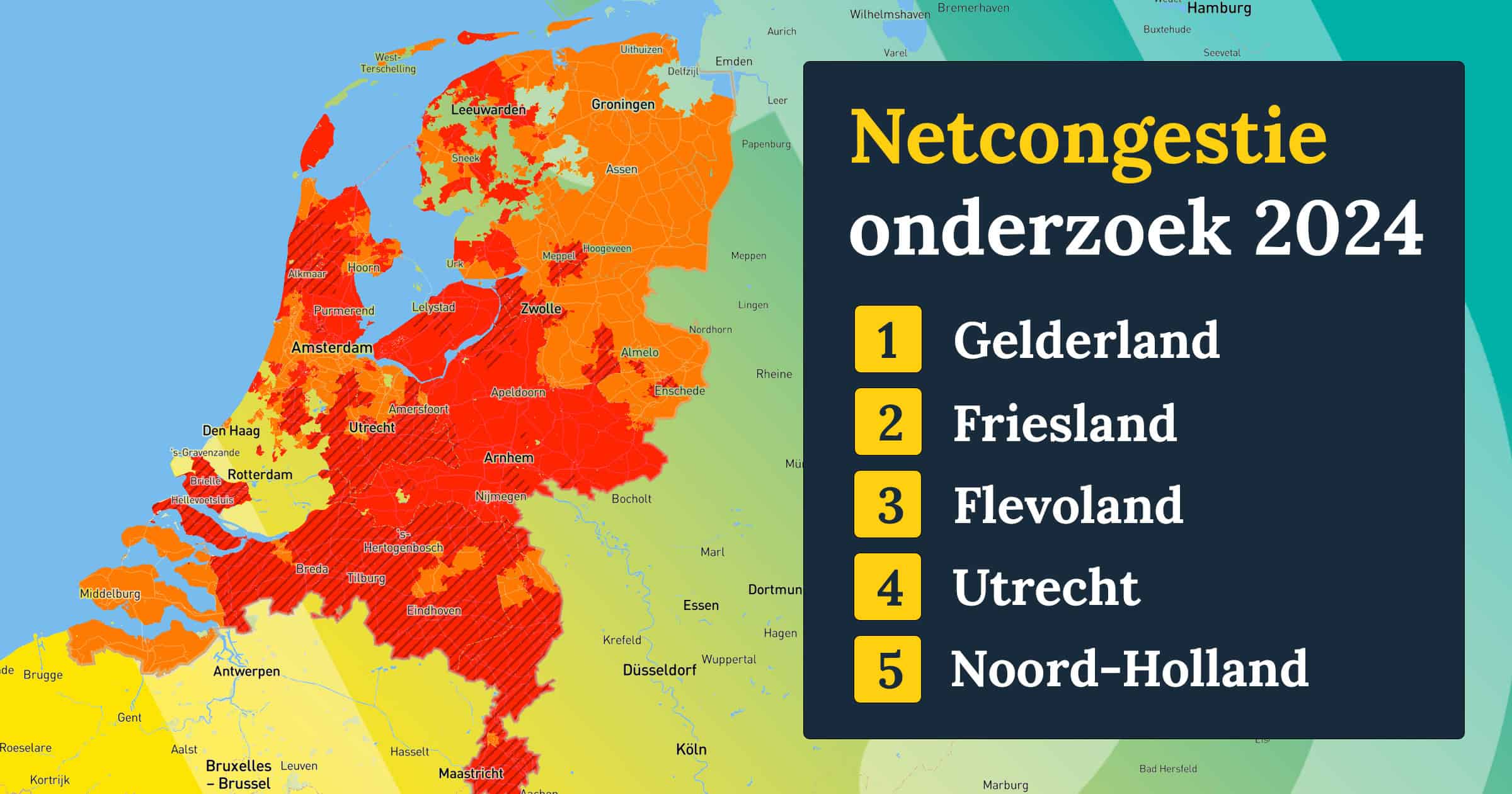
Flashing lights, failing inverters, and waiting lists for power connections – these are signs of an overloaded power grid, better known as grid congestion. Recent research in the first quarter of 2024 shows that six Dutch towns are affected.
Why this is important:
Almost the entire Dutch electricity grid is overloaded these days. As a result, new companies sometimes have to wait a long time for a connection. Moreover, the integration of green power into the grid is delayed
This study used public data from grid operators Liander, Enexis, and Stedin to map in detail where and how often grid congestion occurs. The impact on residents and residential addresses was analyzed per zip code, city, and province.
Gelderland turned out to be the province with the most voltage problems per inhabitant, while the municipality of Urk had the highest percentage of inhabitants affected.
Key findings:
- Gelderland leads with 16% of homes affected by grid congestion, representing 349,795 residents.
- Urk ranks highest among municipalities with 53% of residents affected by grid congestion.
- In six towns, including Markenbinnen and Stokkum, all residents have recently experienced grid congestion.

Consequences for residents
For residents, grid congestion often means that solar panel inverters turn themselves off at high voltage, preventing self-generated power from being fed back into the grid. In order to place thicker cables underground, streets have to be opened; residents will be inconvenienced by this. And people also experience blinking lights in their homes.
Solutions for grid congestion
Grid operators are working hard to stabilize the power grid through infrastructure adjustments and strategic local solutions.
Part of the solution also lies with the residents themselves. Especially by adjusting electricity consumption to times when renewable energy is abundant. During the day when the wind is blowing and the sun is shining.

